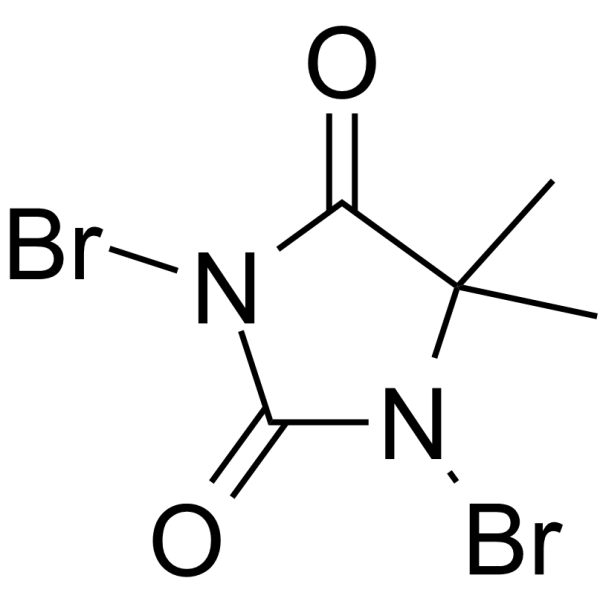
1,3-Dibromo-5,5-dimethylhydantoin
CAS No. 77-48-5
1,3-Dibromo-5,5-dimethylhydantoin( —— )
Catalog No. M26871 CAS No. 77-48-5
1,3-Dibromo-5,5-dimethylhydantoin is an alkyl chain-based PROTAC linker that can be used in the synthesis of PROTACs.
Purity : >98% (HPLC)
 COA
COA
 Datasheet
Datasheet
 HNMR
HNMR
 HPLC
HPLC
 MSDS
MSDS
 Handing Instructions
Handing Instructions
| Size | Price / USD | Stock | Quantity |
| 1G | 26 | In Stock |


|
Biological Information
-
Product Name1,3-Dibromo-5,5-dimethylhydantoin
-
NoteResearch use only, not for human use.
-
Brief Description1,3-Dibromo-5,5-dimethylhydantoin is an alkyl chain-based PROTAC linker that can be used in the synthesis of PROTACs.
-
Description1,3-Dibromo-5,5-dimethylhydantoin is an alkyl chain-based PROTAC linker that can be used in the synthesis of PROTACs.(In Vitro):PROTACs contain two different ligands connected by a linker; one is a ligand for an E3 ubiquitin ligase and the other is for the target protein. PROTACs exploit the intracellular ubiquitin-proteasome system to selectively degrade target proteins.
-
In VitroPROTACs contain two different ligands connected by a linker; one is a ligand for an E3 ubiquitin ligase and the other is for the target protein. PROTACs exploit the intracellular ubiquitin-proteasome system to selectively degrade target proteins.
-
In Vivo——
-
Synonyms——
-
PathwayOthers
-
TargetOther Targets
-
Recptorβ-Lactamase
-
Research Area——
-
Indication——
Chemical Information
-
CAS Number77-48-5
-
Formula Weight285.923
-
Molecular FormulaC5H6Br2N2O2
-
Purity>98% (HPLC)
-
SolubilityIn Vitro:?DMSO : 100 mg/mL (349.75 mM)
-
SMILESCC1(C)N(Br)C(=O)N(Br)C1=O
-
Chemical Name——
Shipping & Storage Information
-
Storage(-20℃)
-
ShippingWith Ice Pack
-
Stability≥ 2 years
Reference
1.Scott J. Hecker, et al. Boronic acid derivatives and synthesis thereof. Patent WO 2019075084
molnova catalog



related products
-
Aloin B
The extract of A. vera and its active ingredient aloin cause melanin aggregation leading to skin lightening via alpha adrenergic receptor stimulation.
-
Triacontanoic Acid
Triacontanoic Acid belongs to the class of organic compounds known as very long-chain fatty acids.?
-
Tranilast
A compound that exhibits anti-inflammatory and immunomodulatory effects by inhibiting lipid mediator and cytokine release from inflammatory cells and interfering with PDGF- and TGF-β1-induced proliferation and migration of vascular medial smooth muscle cells.



 Cart
Cart
 sales@molnova.com
sales@molnova.com


